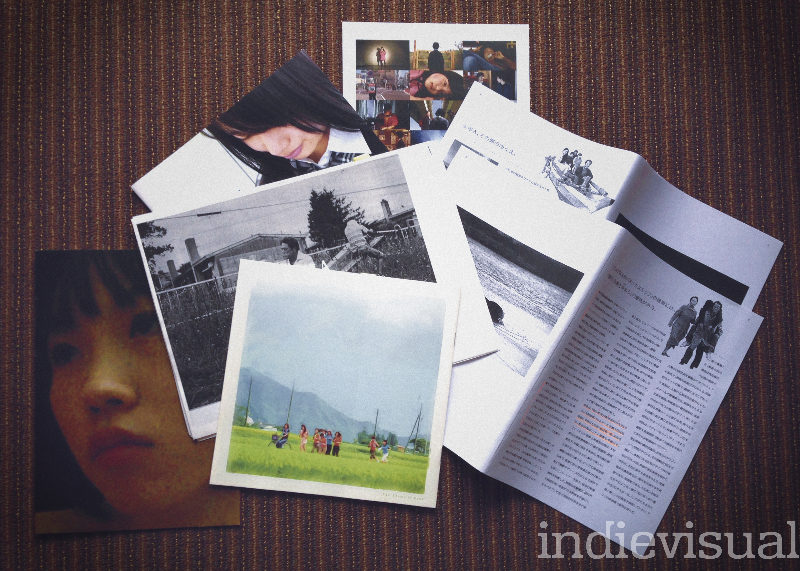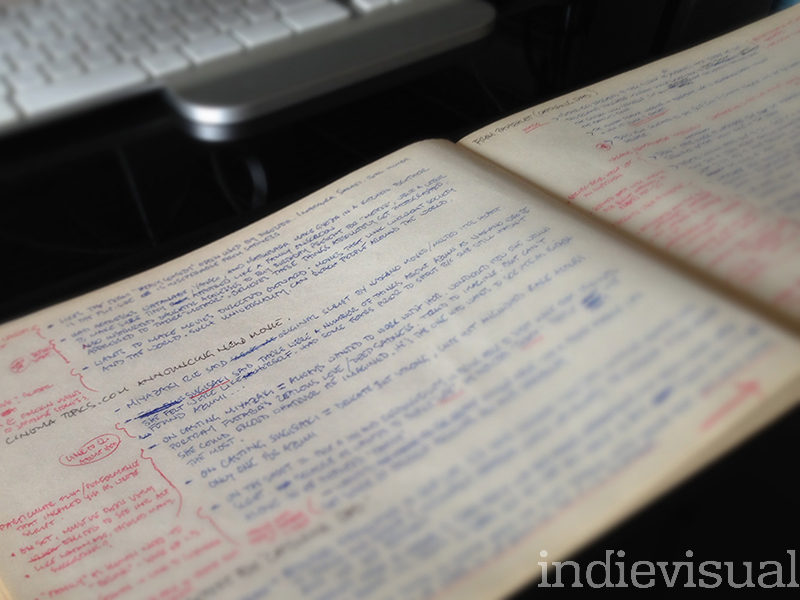Anything created goes on a path from concept to completion. Everyone has a process by which they take their creation through that path. In a series of posts I want to share the process by which Indievisual interviews are created and some of the particular challenges of working in two languages. This first installment will cover the Study phase which is where most endeavors must begin. You have to know what you’re doing before you do it. Likewise, I have to know my subject before going about interviewing them. To be honest, this is–and always has been–my favorite part of a writing assignment. It is my chance to research a topic in which I am interested, and intentionally find out everything there is to know. Everyday life rarely gives us a chance to learn; it becomes a process of necessity rather than choice. Writing about a particular filmmaker offers me the opportunity to conduct the kind of research I would otherwise set aside for “when I have time.”
Gathering Information
After the subject has accepted my offer to interview or write about them, the very first thing I ask for are any and all materials they may have related to their work and/or themselves. These could be souvenir pamphlets (in Japan they still print full-color brochures about the movie which you can buy at the theater), newspaper clippings featuring interviews, reviews, or write-ups about their career and or works, presskits for their movies, etc….
(Paper, Pen, Keyboard – part 1 cont.)
If I’m fortunate, I receive a multitude of materials. More often than not, due to the smaller scale productions of independent filmmakers, I receive only a small amount of printed materials and thus must rely on the web.

Sample of printed material received from filmmakers. (Eagle-eyed readers may glean a hint of the interviewees)
Running a publication like Indievisual would be much tougher in the days before the internet. As it is, I am able to find articles, interviews, and various other pieces of information published on the internet easily. From complete write-ups on Japan’s prominent movie specific websites and journals as well as profiles and documented Q&A sessions at domestic film festivals, a search for the director’s name and/or the title of their movie will yield valuable results. Most of the time, the amount of information found is directly proportional to the filmmaker’s most acknowledged works. Some of these I may have already saved as part of my daily routine, linked from regularly visited social media websites or found on film related news sources. For some of their earlier works or for filmmakers who have not had that “break out” movie, the search can be much more tedious. Research then becomes a game of conjugating specific search keywords and reading through page after page of results for anything relevant. At this point, nothing is left unturned: a blogger reviewing the movie, a brief mention on a distributor’s website, an obscure mention at a small event or festival. The filmmaker’s blog or social media site is also not overlooked. If there is a piece of information which could server as a base point for a question, I grab it and tuck it away for the next step. Once I finish this in Japanese, I “rinse and repeat” in English, just in case foreign media have written about the subject.
Note Taking
Despite living in Japan for over a decade, English is still my default language. It is the language which allows me to conceive and create quickly. This is true for taking notes on a research project, of course, but when your source material is in Japanese, there’s just a bit more work to be done. Articles saved digitally are easier to work with as all I need to do is copy and paste a Japanese kanji (Chinese-based characters) into my computer’s built-in dictionary or an online site which performs the same service. Reading through an article and taking notes can be accomplished with minimal disruption. Printed matter, on the hand, requires using a slightly laborious approach. Without the ability to copy and paste an unknown kanji character into a digital dictionary, I need to draw out the kanji on an application that recognizes what I draw and offers either the definition or a list of other kanji it can be combined with to produce other meanings. Needless to say, the pace of reading through an article is slowed considerably. On very complicated text, I may only get through a few paragraphs in a day. It’s one thing to know what a kanji character means, it is another to comprehend what the text is conveying. Despite the effort, it is worth the extra time as printed matter prepared by the production usually provide the most well-composed versions of information which ultimately become repeated–thus diluted–over the course of press interviews, festival write-ups, etc. However, because an experienced interviewer can still occasionally pull fresh, revealing statements from a filmmaker, I still need to read through articles no matter how repetitive the information may become.

Notes are written in blue ink. Comments, thoughts, or questions in red.
Whatever is worth noting I hand write on paper, categorized by the source and topic (yes, I was that kind of student). Most of the time, I note what is written as a point of fact. I’ll then write a comment on the side of why the passage caught my interest; if it immediately comes to mind, I may also write out the question it inspires. Other times, I will write down a longer sentence or even paragraph to be used as a direct citation within a question. I’ll also begin drawing parallels between statements made from one source to another or correlating themes among their movies. At this stage, also, I am noting down their filmmography. Movies appear and disappear from a filmmaker’s profile as they continue with their career and some do not mention student works despite earning accolades with them. Whether short or medium-length movies, and full length features, if it’s mentioned in an article or documentation, I make sure to highlight it and confirm later with the filmmaker which movies they would like officially acknowledged in the filmmography I create for the magazine.
There have been articles written on how the concentration required to move the hand somehow helps imprint whatever is written to memory. I have found this to be true in my case. Though I may find myself wanting to “undo” a mispelling or to “search” for a specific keyword, handwriting notes does make it possible to begin seeing the shape of interview on a general level. As with any writing project, the shape needs to be further defined resulting in only about 60-70% of the notes taken serving as applicable material for the final product. How this process of elimination drives the creation of questions as well as structuring the interview will be covered in the next installment: Making Inquiries
